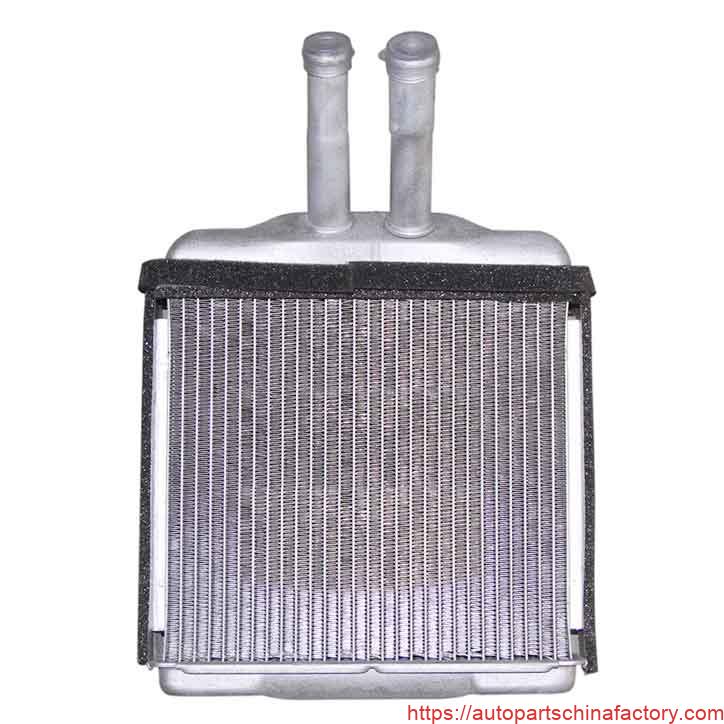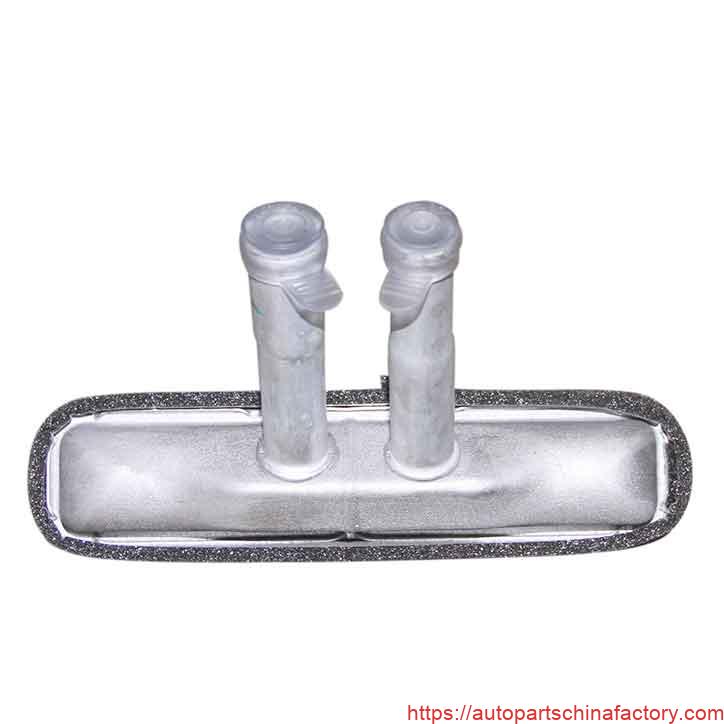- A+
Cando baixan as temperaturas, O sistema de calefacción do seu coche convértese nunha parte crucial do seu confort diario. At the heart of this system is the automotive heater core, Un pequeno pero poderoso intercambiador de calor que transfire a calor desde o refrixerante do seu motor ata o aire que entra na súa cabina.
Pero xa te preguntaches de onde vén este compoñente esencial e como se fai? Vexamos a viaxe dun núcleo do calefactor de automóbiles, cun foco específico na súa fonte dominante: China.
Que é un núcleo do calefactor de automóbiles e como funciona?

The heater core is a small radiator-like device typically located under your car's dashboard. It's an integral part of your vehicle's cooling system, but with a different purpose. While the main radiator dissipates heat from the engine to prevent overheating, the heater core's job is to harness that heat.
Here's the simple process:
- Hot Coolant Flow: As your engine reaches its operating temperature, hot engine coolant is circulated. A portion of this hot coolant is diverted to the heater core.
- Heat Exchange: A blower motor pushes air from outside or inside the cabin through the heater core's fins and tubes.
- Warm Air Generation: As the air passes over the hot core, it absorbs the heat from the coolant.
- Cabin Comfort: The now-warm air is then directed through the vehicle's vents, heating the cabin and defrosting your windshield.
A faulty heater core can lead to several problems, including a lack of heat, a sweet smell of coolant in the cabin, or a foggy windshield. When these issues arise, it's often a sign that you need to consider a heater core replacement.
The Manufacturing Process: From Raw Materials to a Finished Product
The manufacturing of an automotive heater core is a sophisticated process that relies on precision engineering to create a durable and efficient heat exchanger. While designs can vary, modern heater cores are most often made of aluminum due to its lightweight nature and excellent heat transfer properties.
Here's a general overview of the manufacturing steps:
- Material Preparation: The process begins with stamping and forming thin aluminum sheets into the components of the core, including the tubes, fins, and side plates. The tubes are designed to carry the coolant, while the fins are intricately shaped to maximize surface area for heat exchange.
- Core Assembly: The tubes and fins are precisely stacked and assembled into a core structure. This is a critical step that ensures the proper spacing and alignment for optimal performance. Headers and side plates are then attached to the ends of the core.
- Brazing: The entire assembly is then subjected to a high-temperature brazing process inside a controlled atmosphere furnace. This process uses a special brazing alloy to permanently bond all the aluminum components together, creating a strong, leak-proof unit. This is a key step that determines the heater core's longevity and reliability.
- Leak Testing: After brazing and cooling, every heater core is rigorously tested for leaks. This is typically done with pressurized air or nitrogen. A single pinhole leak could lead to a coolant leak in a vehicle, causing significant damage and requiring another replacement.
- Final Assembly and Inspection: The finished core is then fitted with plastic tanks and other connectors, where necessary, before a final quality check. They are then packaged for distribution to vehicle manufacturers or the aftermarket.

Sourcing from China: The Global Hub for Automotive Parts
China has firmly established itself as a global leader in the automotive parts industry, and automotive heater cores are no exception. The country's manufacturing prowess is driven by several factors:
- Cost Efficiency: China's large-scale production capabilities, along with competitive labor and material costs, allow manufacturers to produce high-quality heater cores at a lower price point.
- Established Supply Chain: The country has a mature and well-integrated supply chain for automotive components. Factories for raw materials, sub-components, and specialized machinery are often located in close proximity, which streamlines production and reduces logistics costs.
- Technological Advancement: Chinese manufacturers have invested heavily in automation and precision engineering. They utilize advanced techniques like laser welding and robotics to ensure consistency and quality, meeting the strict standards of both original equipment manufacturers (OEMs) and the global aftermarket.
For businesses and car owners around the world, sourcing car heater cores from China offers a reliable and cost-effective solution. Many global automotive brands and aftermarket suppliers partner with Chinese factories to produce their components, ensuring a steady supply of parts that meet international quality standards.


